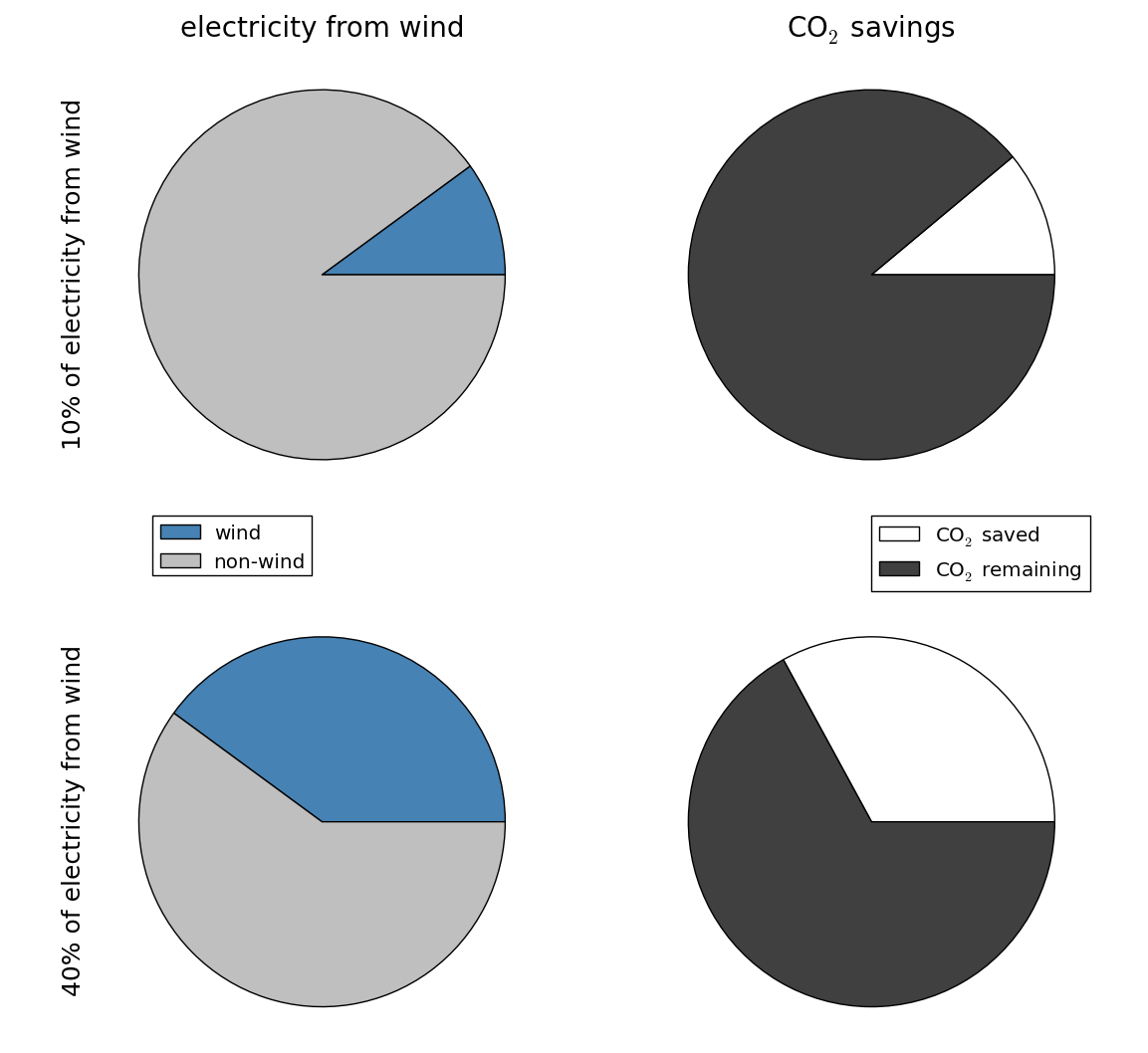Adding wind power saves CO2
Posted on 21 June 2012 by MarkR
Over the past decade, engineers and scientists have studied questions about the effectiveness of wind farms. They found that turbines produce much more energy than they take to build and that even though wind needs backup power stations for when it's calm, they still make big carbon savings.
When calculating these carbon savings the researchers found they had to include some surprising factors like the accuracy of weather forecasts and how efficiently gas power stations turn on and off. Wind isn't zero carbon, but it's very low carbon.
Turbines produce about 20 times the energy used to build them, and are low CO2
A wind farm 'life cycle assessor' adds up the energy needed to mine, refine, process and transport the materials in a turbine and adds the energy used to maintain and decommission a wind farm at the end of its life. Then they compare this with the energy produced.
A 2010 University of Vermont study brought together data for 119 wind farms and found that, on average, they produce almost 20 times the energy used to build them; twice as good as coal (Kubiszewski et al, 2010).
For the 69 that also reported carbon emissions, the average was 25 grams of CO2 for each unit of electricity generated; 98% savings versus an average coal power station. This fits with figures reported by others like Weisser, 2007 and Tremeac and Meunier, 2009.

Figure 1 - 'Energy Return on Investment' (EROI) for different technologies. This is the amount of energy they produce divided by the energy needed to get them running. A value of 10 means that they generate 10 times as much electricity as is put in. Wind outperforms coal, which needs lots of energy for mining and transporting the fuel. Figures from Kubiszewski et al, 2010.
Running backup power stations reduces savings, but the savings are still big
When the weather calms other power stations have to take up the load. Turning a generator up and down is inefficient: many of us experience this when we pay for the difference in mpg between stop-start city driving and smooth highway driving.
Valentino et al, 2012 have now calculated this effect based on real weather data and wind forecasts for 15 sites in Illinois. The inefficiency from turning power stations on and off takes a bite out of the savings that wind power brings, but since the most polluting power stations get turned off first the savings are still big. If Illinois got 10% of its electricity from wind, the savings in CO2 would be about 11%. The savings are bigger than 10% because about a quarter of Illinios' power is low carbon nuclear and this wouldn't be turned off.
As more wind turbines are added, they still make savings but if Illinois got 40% of its electricity from wind, its CO2 emissions would drop only 33% as nuclear reactors scale back slightly.

Figure 2 - For the state of Illinois, fraction of electricity from wind (left) and reductions in emissions of carbon dioxide (right), the gas mostly responsible for global warming. Figures reported by Valentino et al, 2012.
But what about the newspapers that said wind isn't that good?
Some think tanks and newspapers have been critical of wind power based on 'back of the envelope' calculations from a pair of retired Dutch physicists, de Groot and le Pair which were reported in a website article. In the article they made it clear that (emphasis added);
"How much efficiency is lost in this way and how much extra fuel is required for this extra balancing of supply and demand is unknown. In this article we attempt to make an educated guess."
They guessed that wind power does not reduce CO2 emissions, a very different result from Valentino et al who did use real weather and real power station data. The de Groot and le Pair results were so different because they assumed that wind forecasts aren't used and that all backup is provided by the least efficient power stations possible.
They made it clear that they didn't have the actual figures and that they "hope to connect with the experts that have the real data or who can significantly improve on our estimates." Fortunately, Valentino et al have now done this and found that the result is not as bad as feared: wind power does reduce CO2 emissions significantly.
Lessons
Wind power is low but not zero carbon. Its biggest problem is the need for backup power stations, which burn fossil fuels and are inefficient. Even including these effects it would still save carbon in a state like Illinois, but the savings would likely depend on the electric grid and the local wind climate.
Even areas as large as Germany or Illinois can suffer from the variation of wind, and by spreading wind farms further afield and linking grids together the fluctuations and inefficiencies could be reduced. Or by storing energy from windy days to be used on calm ones. However, both of these would take energy to build and add to the cost.
Think tanks and the media widely publicised an 'educated guess', which they called a 'new report' that showed wind farms don't save CO2. Thanks to the work of Valentino et al we know these first calculations were wrong. When deciding what technologies to use we should include all of the costs, but they should be worked out using proper scientific method rather than an 'educated guess'.































 Arguments
Arguments






























[DB] We all start somewhere. :) Html posting tips are here.
Sphaerica invoked Poe's Law.